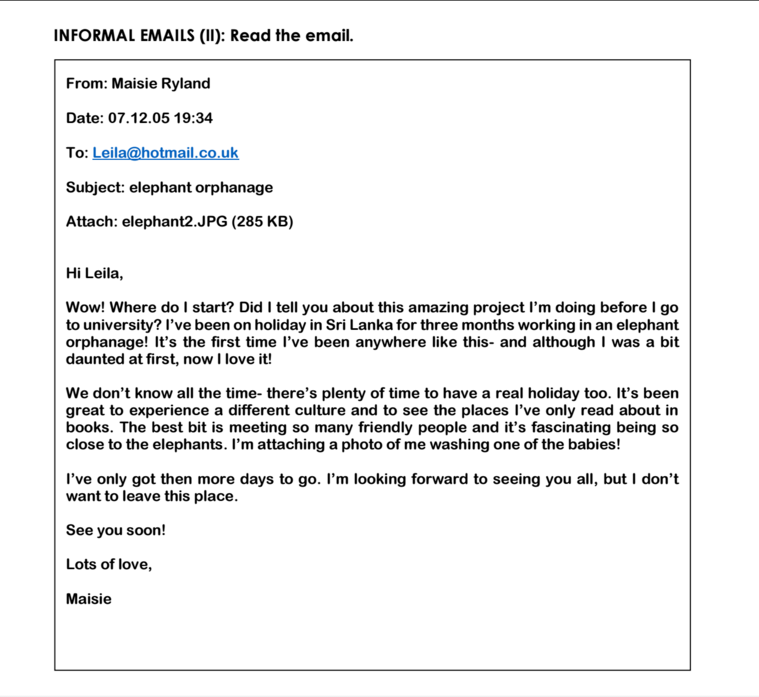

Thanks for your email and sorry for not replying earlier. P.S: Mommy sends you a big hug and says that she misses you. I really hope to hear more from you soon. And maybe we can think about make Sophia´s birthday at Disney!! We can stay in your home, can’t we? California is closer to Toronto than Brazil. But now we´ll finally see each other frequently. Your mother told me that you have a little baby boy. How are Lis and Levi? Now Sophia plays a lot with them, doesn’t she?. In fact, I started last week and I love it. I´ll do a College in health services administration and for it nowadays I´m doing an on-line English course. We’re planning to live in Toronto next year. And the great and best news is that we´ll see you soon. Now we are going to therapy and everything is OK. To make things worse Sophia was also very bad with her grandfather´s death, you know how attached Sophia and her grandparents were because my parents always lived with us. My mom and I were very sad about daddy´s early death. Now Leo has been living in Montreal/Canada since last December 2 because he is doing a graduate degree there, but Sophia is here with us. At the end of the year, I separated from my husband. I was with your mother last month at church and I told her that my father and my aunt died last year. Type your answer in the reply section and I will give you personalized feedback. Share your experience learning English and your future goals with your friend. Write a two or three-paragraph response to your friend explaining to your friend that you have started an English course. You have just received an email from a friend you have not spoken to in a long while. Now it’s your turn to write an informal email. The best way to improve your writing is to practice. Don’t forget to ANSWER the questions that your friend has asked you.Use contractions (I’m, I’ve, I’d, don’t, can’t, won’t, etc.).Use the standard format that English speakers use to write informal emails.Looking forward to hearing from you soon.Good luck with … (a new project/ a trip/ a new class/ a new job…).


I hope things in (city) are going well.Look at the writing task and ask yourself: ‘What would I want from this if I were the reader?’ Remember, the more you question what you are doing, the better you will do it.Useful language: formulaic expressions for informal emails Greetings Hint: Put yourself in your reader’s shoes. Decide which you must include (essential) and which you might include (optional) and drag and drop into the correct category. Below are a number of statements that could go into the email. You have been asked to write an email to inform the staff of this matter. Safta also mentioned that the company has finally agreed to replace the existing lockers with bigger ones within the next six months. Safta Iqbal, the Hygiene Manager, has asked you to deal with the problem. This is against company regulations – in fact, it is a disciplinary matter. You suspect she has been encouraging others. You know one team member in particular (Catrin Rogers) resents arriving five or ten minutes early to change into uniform. You have found that some of your cleaning staff are clocking on before they change into their uniforms. Imagine you are a supervisor in a care home. Before you do so, take a look at the example below, so that you’re familiar with the main elements and the kind of wording that is appropriate. In the next two activities, you plan and write an email.

If the answer is ‘yes’, you may or may not choose to include it. If the answer to this question is ‘no’, the information must go in. Will my reader understand what I am trying to say without this piece of information? This question gets you to focus on why you are writing in the first place. Two questions can help you decide whether any piece of information is a ‘must-go-in’ or a ‘might-go-in’. That means deciding what must go in and what might go in. One of the golden rules of writing to inform is contained in the acronym KISS (Keep It Short and Simple). break up your text with subheadings, diagrams and illustrations.use language that is clear and to the point.It’s useful to keep these features in mind when you write to inform. The letter uses most of these techniques, apart from diagrams and illustrations.


 0 kommentar(er)
0 kommentar(er)
